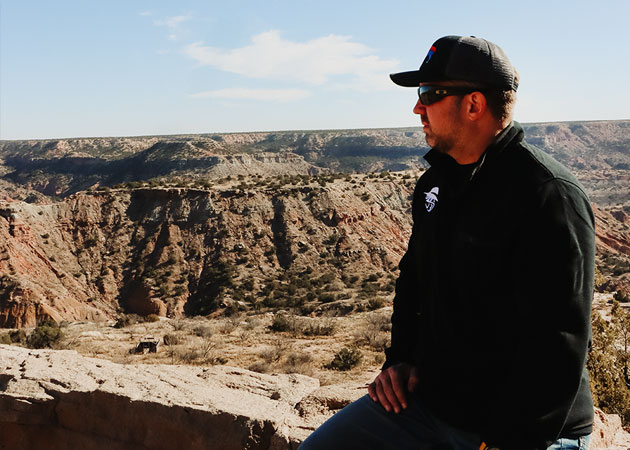1-D-1 Texas Wildlife Management Plan
Today we take a step by step look at how you can set up your 1-D-1 Wildlife Management plan so that you can get a Wildlife Evaluation for your Texas property. We will also go over the requirements you need to meet, as well as some other important information dealing with Wildlife Evaluation Status.
Property Taxes for Land:
I’ve always found AG Evaluations and Wildlife Evaluations to have a huge financial impact when managing my own land assets, or helping someone else with theirs.
Example? A 250-acre ranch that does not have an Ag or Wildlife Evaluation can cost up to $5000 a year in taxes depending on the county. With exemptions? You could end up paying less than $200.
What to do when you buy a new property?
For you to apply for 1-D-1 WM status, your property must be ag or timber exempt. There are two options for how to transfer ag exemption to a new owner.
One, you can wait until the CAD (County Appraisal District) sends out the annual appraisal notice to update your information.
Or, you can be proactive and contact CAD to start the process of updating your information right away. This will help you make sure that the paperwork is all in line with the new transfer. That is the route we would recommend that you take. Once the information is up to date, you will be well on your way to 1-D-1 Status.
Applications for 1-D-1 WM must be turned in by April 30th of each year in order to take effect.
Requirements to obtain a Wildlife Evaluation Status in Texas
Properties being appraised as agricultural or timber lands can be converted based on the appraisal of wildlife management.
In order to apply, landowners must include with their application a wildlife management plan.
There minimum acreage requirements that you will want to take into consideration. Here is what TPWD has to say about them:
“Tracts of land that are adjacent and under the same ownership qualify as one tract of land. For properties that have been reduced in acreage since the previous tax year, there are minimum acreage requirements. Please check with your county appraisal district for those minimum acreages as they depend on the appraisal region in which the property is located. For all other properties, there is no minimum acreage requirement.”
You actually can write your own wildlife management plan, but you must do so using the TPWD wildlife management form.
Personally, I would recommend you work with TPWD biologists to set up a correct management plan for your property. They can be a vital resource when it comes to education and guidance.
Go here for the list of Texas Counties and TPWD biologist points of contacts: TPWD Biologists By County
You are able to write your own wildlife management plan yourself, although you must use the TPWD wildlife management plan form. Again, I highly recommend that you work with TPWD biologists to assist in setting up the correct management plan for your property. They have been vital in assisting in education and in guidance.
If you purchase a property that is already under a Wildlife Evaluation, it is possible to have the status transferred over to you. To keep things going as smoothly as possible we recommend contacting the county appraisal district to begin the transference process right away.
For more information click here.
Cons to Wildlife Evaluation – Unlike Ag Evaluation, purchasing equipment or services to support Wildlife Evaluation are not eligible for a sales tax exemption. You will have to pay the normal sales tax (6.25%) for equipment and services.
Wildlife Management Plan Steps:
Let’s now take a look at the steps necessary to get your Wildlife Management plan going. Also keep in mind that TPWD can assist you with your plan for your property. If you’d like more information, contact your county biologist.
Now, read on for the steps you will need to take for your AG Evaluation Wildlife Management Plan. If you need assistance or have any questions feel free to reach out to James Bigley Realtor to assist. He writes plans for landowners.
Step 1: Provide owner information (This will be self descriptive)
Step 2:Provide the property description
(For this step you will need to look at the CAD for a legal description. You will also need to list habitat types. You can use Google Maps to get the layout of your land).
Step 3:List your target species (it can be more than one, as needed)
Step 4: State your goals and objectives.
Example: “To restore natural habitats on property and support a healthy wildlife population”
You should also make a list of actionable objectives. Predator control, supplemental water, water usage, etc.
Step 5: Qualifying Wildlife Management Activities
You will need to list at least three qualifying Wildlife Management Activities, and then base your objectives off of them.
Step 6: White tail and Mule Deer Population Management
This is where the TPWD biologist comes into play. They will be able to give you specific target numbers based on the requirements of your county.
Step 7: Wildlife Management Association:
Some properties have a WMA (Wildlife Management Association) instead of a HOA. If this applies to you, you will need to get the rest of the owners to fill out the management plan as well.
Step 8: Wildlife Management Activities:
Here, you detail the activities listed in step five, including information on what you plan to improve on your property
Requirements and Note –
- In order to apply for 1D1 Wildlife your property must be ag exempt.
- You must apply to the County Appraisal District (CAD) with a Wildlife Management Plan.
- Each county in Texas has different minimum acreage requirements for 1D1 Wildlife Exemption.
- Annually you are required to turn into the CAD an annual Wildlife Management Report.
- Reports are due by April 30th of each year.



